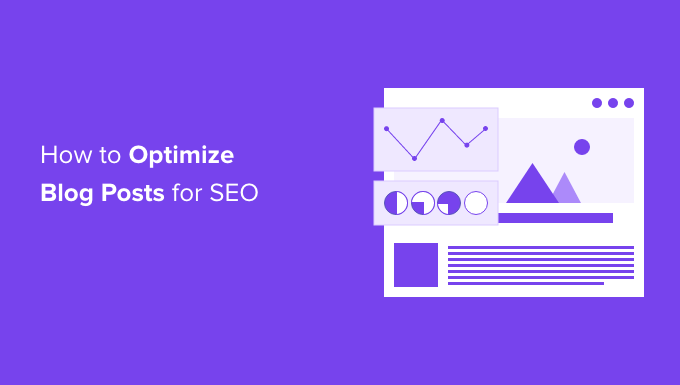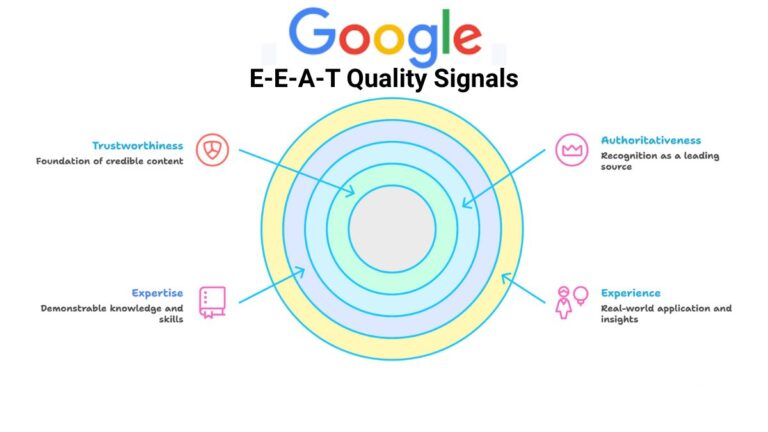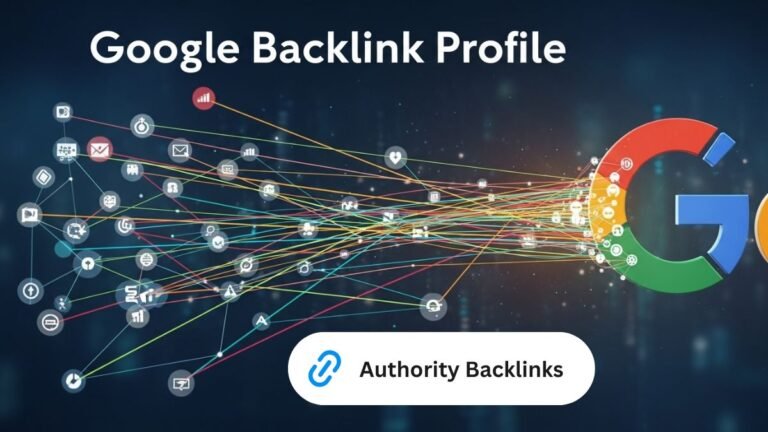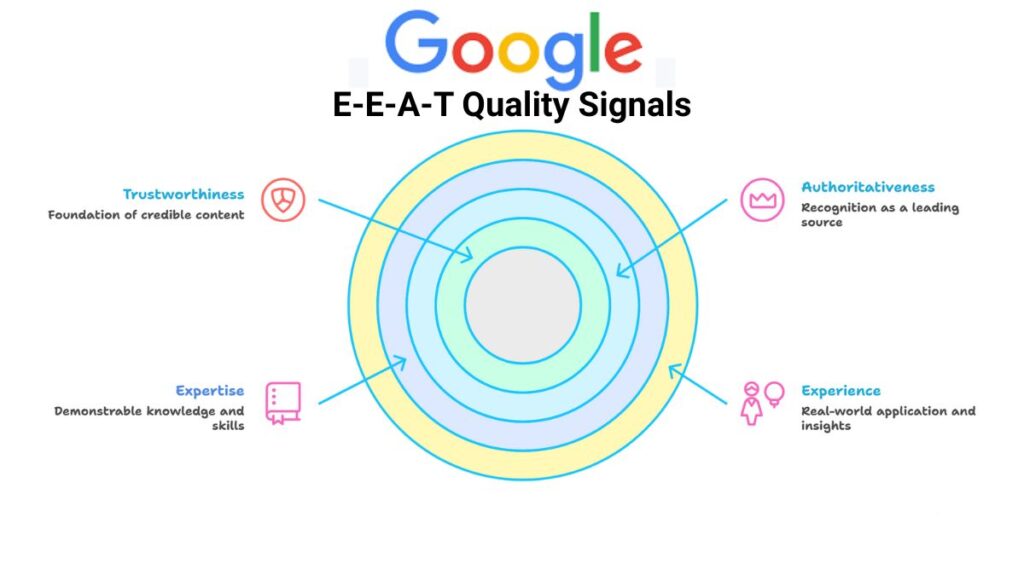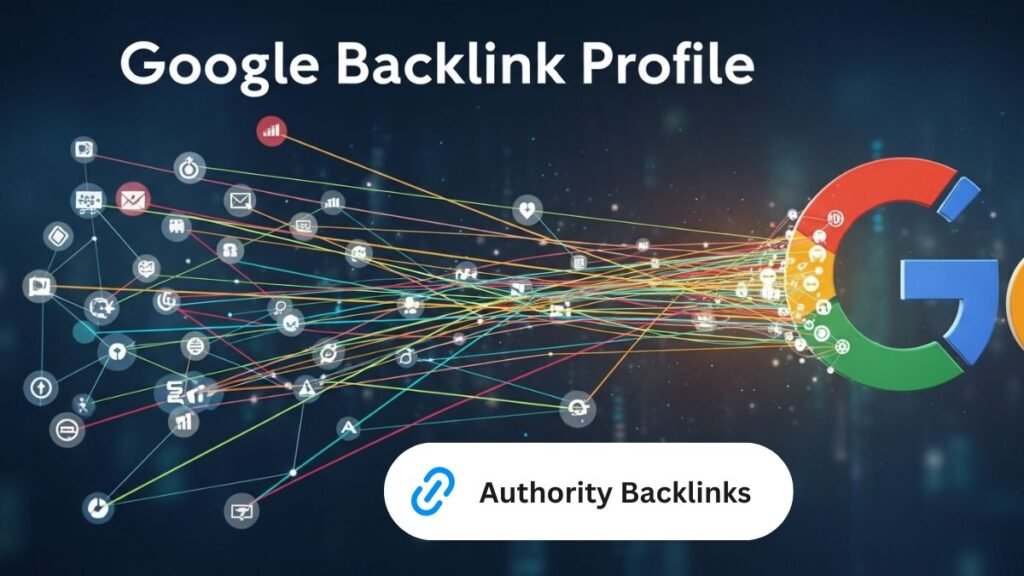Why Your Google Discover SEO Is Failing
I'll be brutally honest with you: most publishers are doing Google Discover optimization completely wrong. And I'm not saying this to be provocative—I'm saying it because I've seen it happen hundreds of times.
Over the past five years working with clients who've generated over 1 million clicks from Google Discover alone, I've watched the same mistakes destroy potentially viral content. Smart people. Good writers. Solid websites. Yet their Discover traffic remains at zero while competitors pull 800,000+ clicks in 28 days.
The worst part? They're following advice that sounds right but kills their chances of ever appearing in the Discover feed.
Today, I'm going to show you exactly what's sabotaging your Discover optimization efforts, and more importantly, what actually works heading into 2026. No fluff, no outdated tactics—just proven strategies backed by real data and results.
The Google Discover Reality Check Nobody Talks About
Before we dive into what you're doing wrong, let me show you something that'll change how you think about Discover.
Here's what most SEO guides won't tell you: Google Discover doesn't work like traditional search. At all.
While you're obsessing over keyword research and backlinks (which matter for SERP), Discover operates on a completely different algorithm. It's not about what people search for—it's about what they're interested in consuming right now, in this moment, on their mobile device.
Think about it. When was the last time you opened your phone and actively searched for something on Google? Now compare that to how many times you've scrolled through recommended content while waiting in line, during commercials, or just killing time.
That's the Discover opportunity. And it's massive.
According to recent data, 58% of all Google searches in the U.S. now end without a click—what HubSpot's CEO calls the "traffic apocalypse." But here's the kicker: while traditional search traffic is declining, Discover traffic is exploding for publishers who know how to optimize for it properly.
Mistake #1: You're Using Traditional SEO Tactics (And It's Killing Your Chances)
This is the biggest mistake I see, and it's costing publishers thousands of potential clicks daily.
You're writing for search engines when you should be writing for scroll-stopping interest.
Let me explain what I mean. In traditional SEO, you target a specific keyword like "how to improve website speed" and optimize everything around it. Title tag, meta description, H1, keyword density—the whole nine yards.
That works great for search. It's terrible for Discover.
Why? Because Discover users aren't searching for specific solutions. They're scrolling through a feed of content matched to their interests. Your article isn't competing against other "how to improve website speed" articles—it's competing against celebrity gossip, breaking news, recipe videos, and whatever else Google thinks they want to see.
What actually works: Emotion-based triggers and pattern interrupts.
Here's what separates Discover winners from losers:
Failing Discover Titles:
"10 Ways to Improve Your Website Speed"
"Guide to Better SEO in 2026"
"Understanding Core Web Vitals"
Winning Discover Titles:
"I Changed One Setting and My Website Traffic Jumped 400% (Here's What Happened)"
"Everyone's Making This SEO Mistake in 2026—Are You?"
"Stop Doing This On Your Website. Google Hates It."
See the difference? The winning titles create curiosity, use pattern interrupts, and promise valuable insights without giving everything away.
But here's where most publishers mess up: they think this means clickbait. Wrong.
Your content MUST deliver on the promise. Google's Helpful Content Update specifically penalizes articles that use misleading headlines. Research from Discover expert John Shehata shows that the top-performing Discover articles (those with 25%+ CTR and 10,000+ impressions) use emotional titles—but they're not doing bait-and-switch.
The formula is simple: Create intrigue + Deliver value = Discover success.
Mistake #2: Your Images Are Destroying Your CTR (Without You Knowing It)
[caption id="attachment_986" align="aligncenter" width="600"] Stock Photos Destroying CTR[/caption]
This is painful to watch because it's such an easy fix, yet 80% of publishers get it wrong.
Your featured image is the first thing users see in the Discover feed. Before your headline. Before anything else. And if it doesn't stop the scroll, nothing else matters.
Here's what you're probably doing wrong:
Using your site logo as the featured image. This violates Google's Discover content guidelines and tanks your CTR. Yet I see it constantly, especially from news sites who think brand recognition matters here. It doesn't. Nobody stops scrolling for a logo.
Using stock photos everyone's seen a thousand times. That generic business handshake photo or the lady pointing at a laptop? Your CTR just died. Unique, custom images increase CTR dramatically. If users have seen it before, they won't click.
Ignoring the technical requirements. Google explicitly states images should be at least 1200px wide. But here's what the documentation doesn't emphasize: you need to enable the max-image-preview:large meta tag. Without it, Discover shows a smaller thumbnail instead of a full-width image. Research shows this single change can increase CTR by 2-3X.
Let me give you the exact specifications that work:
Optimal Discover Image Setup:
Dimensions: 1600 x 840px (16:9 aspect ratio) or 1200 x 630px minimum
Format: WebP with JPEG fallback (for compression and quality)
File Size: 150-200KB maximum (affects load time)
Meta Tag: <meta name="robots" content="max-image-preview:large" />
Alt Text: Descriptive and natural (not keyword-stuffed)
Content: Custom, unique visuals that create curiosity or emotion
But there's one more thing most guides miss completely.
The crop hook technique. Here's what I've learned works incredibly well: leave roughly 10% white space on all sides of your image. Why? Because Discover automatically crops and resizes images based on device sizes. When you leave that breathing room, Discover's crop often makes your image pop even more—the subject becomes more prominent, the composition feels cleaner, and users are more likely to stop and click.
[caption id="attachment_987" align="aligncenter" width="600"] The Crop‑Hook Technique[/caption]
I know it sounds counterintuitive. Why would you intentionally make your image smaller? Because Discover's algorithm will zoom and crop it anyway. By designing for that crop, you ensure the final result looks intentional and professional rather than awkwardly cut off.
Try it. The difference is remarkable.
Mistake #3: You Think Keywords Matter (They Don't - Not The Way You Think)
[caption id="attachment_988" align="aligncenter" width="600"] Keywords Don’t Drive Discover Like You Think[/caption]
This might sound crazy coming from an SEO professional, but for Google Discover, forget everything you know about keyword optimization.
Discover doesn't match keywords to queries. There are no queries. Users aren't searching—they're scrolling through personalized content recommendations based on their interests and behavior patterns.
Think about what that means. You could perfectly optimize an article for "Google Discover optimization" with ideal keyword density, LSI keywords, and semantic variations. And it might never appear in a single Discover feed if the emotional triggers and visual elements aren't optimized.
What actually matters for Discover:
User engagement signals (CTR, time on page, scroll depth)
Topic relevance to user interests (not search queries)
Content freshness and trending topics
Emotional resonance and pattern interrupts
Visual appeal and mobile experience
Here's proof: I've seen articles with zero focus on traditional keyword optimization generate 50,000+ Discover clicks in three days. Why? Because they nailed the emotional angle, used compelling visuals, published during a trending moment, and kept users engaged once they clicked.
Meanwhile, I've seen meticulously keyword-optimized articles with perfect Rank Math scores get zero Discover impressions. The difference? Those articles were optimized for search, not for scrolling.
The right approach: Use conversational language that matches how people actually talk about topics. Natural phrases, questions people ask, and emotional language that resonates with your target audience's current interests.
For 2026, as AI-driven search continues to evolve (with AI Mode and ChatGPT changing how people find information), Discover becomes even more valuable because it bypasses the traditional search process entirely. Your content can reach users who never would have searched for it—if you optimize correctly.
Mistake #4: Your Publishing Frequency Is All Wrong
[caption id="attachment_989" align="aligncenter" width="600"] Content Velocity & Consistent Publishing[/caption]
Most publishers either publish too randomly or don't understand the content velocity principle that Discover rewards.
Here's what I've learned from scaling multiple sites to six-figure monthly Discover traffic: consistency matters more than you think.
Discover algorithm insight:
Google actively looks for "content velocity bursts" - publishers who maintain high posting frequency within 7 - day windows. This signals active, fresh content sources worth recommending to users.
But most publishers approach it wrong. They'll publish three articles on Monday, nothing for four days, then two articles on Friday. Or they'll have periods of heavy activity followed by weeks of silence.
Discover interprets this as unreliable. The algorithm wants publishers who consistently deliver fresh content—not sporadically.
What actually works for 2026:
Minimum viable frequency: One article every 24 hours OR five articles per week consistently. No gaps. No randomness.
Ideal frequency: One to three articles daily, published at similar times. This trains the algorithm to expect and recommend your content regularly.
I know what you're thinking: "That's a lot of content!" Yes, it is. But here's the reality - publishers dominating Discover in 2026 treat it like a news operation, not a blog. Fresh content, published consistently, optimized for current interests.
If you can't maintain that frequency, focus on five strong articles per week. But make it consistent. Same days, similar times, no exceptions.
Why this matters more in 2026:
With AI content generation becoming mainstream, the internet is flooding with more content than ever. Google Discover needs reliable signals to filter quality publishers from the noise. Publishing consistency is one of those signals.
And here's something critical most publishers miss: topic clustering matters.
Don't publish about digital marketing on Monday, recipes on Tuesday, cryptocurrency on Wednesday. Pick your niche and stay in it. Discover builds publisher authority by topic. When you consistently publish high-quality content in a specific niche, Discover recommends your content more aggressively to users interested in that topic.
Think of it as building topical authority, but for Discover instead of search rankings.
Mistake #5: You're Ignoring The Trending Topic Window (And Paying For It)
[caption id="attachment_990" align="aligncenter" width="600"] 24‑Hour Trending Topic Window[/caption]
Here's where most publishers completely miss the Discover opportunity: timing.
Research shows that the majority of Discover URLs receive traffic for only 3-4 days, with most traffic occurring in the first 24-48 hours after publication. Think about what that means for your strategy.
If you publish an article about a trending topic three days after it starts trending, you've already missed the Discover window. Your article might rank well in traditional search eventually, but it'll get zero Discover traction because the algorithm has already moved on.
The Discover trending topic rule: You have 24 hours maximum from when a topic starts trending to publish and capitalize on that trend.
This is why news publishers dominate Discover—they're set up to move fast. But here's the good news: you don't need a newsroom to take advantage of trending topics.
Your 2026 trending topic strategy:
1. Set up trend monitoring systems:
Google Trends (check daily, set alerts for your niche)
Twitter/X Trending (especially valuable for real-time trends)
YouTube Trending (shows what's capturing attention)
Reddit trending discussions (r/all and niche subreddits)
Google News (industry-specific trending stories)
2. Create a rapid response workflow:
Have article templates ready for common trend types
Keep a bank of high-quality images you can quickly customize
Set aside specific time for trend monitoring (morning and afternoon)
Have editorial guidelines for evaluating which trends fit your niche
3. Execute within 24 hours:
Monitor for trends in your niche morning and evening
Make publish decision within 2 hours of identifying trend
Write and publish within 12-24 hours of trend starting
Optimize for Discover while trend is still active
Let me give you a real example. In early 2025, when there was breaking news about new AI regulations, publishers who published within 24 hours saw massive Discover traffic. Those who waited three days? Their articles got lost in the noise, even if they were better written.
The same pattern repeats constantly. Celebrity news, tech announcements, policy changes, industry drama—whatever trends in your niche, you need to be fast.
Why this matters more in 2026: With AI tools making content creation faster, the trending topic window is shrinking. Publishers using AI to rapidly create high-quality trend articles will dominate. The winners will be those who combine speed with quality—not one or the other.
Mistake #6: Your Content Doesn't Keep People On The Page
[caption id="attachment_991" align="aligncenter" width="600"] Engagement & Dwell Time vs Bounce[/caption]
Getting the click is only half the battle. If users bounce immediately, Discover stops showing your content. Period.
Here's what's happening: You optimize for the click with a great headline and image. User clicks. Then they see a wall of text, slow-loading page, or content that doesn't match their expectation. They hit back. Discover interprets this as "users don't actually want this content" and stops recommending it.
I've watched articles lose thousands of potential impressions because of poor engagement signals.
What kills engagement:
Slow page load (over 2 seconds is death)
Text-only content with no visual breaks
Immediate popup or interstitial
Content that doesn't match the headline promise
Poor mobile experience
Excessive ads above the fold
What maximizes engagement:
1. Optimize for dwell time strategically:
Break up text with relevant images every 2-3 paragraphs
Use short paragraphs (2-4 sentences maximum)
Include pull quotes that highlight key insights
Add video embeds where relevant (but ensure fast load)
Use bullet points and numbered lists for scannable content
2. Create interactive elements:
Quiz widgets (AI-generated quizzes are huge for engagement)
Interactive calculators or tools
Polls or surveys
Comment sections with engaging questions
Table of contents with jump links
3. Mobile optimization is non-negotiable:
Responsive design that works on all devices
Readable font sizes (16px minimum for body text)
Tap targets large enough for thumbs
No horizontal scrolling required
Images that scale properly
Here's something that works incredibly well: the "progressive information reveal" technique.
Structure your content so the opening paragraphs hook readers, then each section delivers a specific insight or revelation that keeps them scrolling. Think of it like a TV show that ends each scene with a small cliffhanger. You don't need dramatic twists—just ensure each section naturally flows to the next with clear value delivery.
For AdSense optimization: This is where you need to balance revenue with experience. I've found the sweet spot is:
One ad above the fold (but below the headline and opening paragraph)
Ads integrated naturally between sections (every 3-4 paragraphs)
No more than 3-4 ads per 1,000 words
In-content native ads perform better than traditional banner ads
Auto ads work well if you set exclusions for the first screen
The goal is revenue without destroying the experience that keeps users engaged. Poor ad implementation kills engagement, which kills Discover visibility, which ultimately costs you more money than the extra ad units made.
Mistake #7: You're Ignoring E-E-A-T (Google Isn't)
[caption id="attachment_992" align="aligncenter" width="600"] E‑E‑A‑T as the Foundation[/caption]
In 2020, Google explicitly added E-A-T (Expertise, Authoritativeness, Trustworthiness) to Discover guidelines. In 2022, they added the extra E for Experience. Yet most publishers treat this as a traditional SEO concern, not a Discover priority.
Big mistake.
Discover actively evaluates content quality using E-E-A-T signals, especially after the Helpful Content Update. The algorithm is trying to avoid recommending misinformation, low-quality content, or unreliable sources to users.
Here's why this matters more than you think: Discover introduces your content to cold audiences who've never heard of you. They're not coming from a Google search where they evaluated multiple results. They're scrolling through a feed and your article appears. Google needs strong signals that your content is trustworthy before recommending it to thousands of users.
How to demonstrate E-E-A-T for Discover:
Experience: Show first-hand knowledge and real-world application.
Include case studies from your actual work
Share specific results with real numbers
Mention challenges you've faced and overcome
Use phrases like "in my experience," "here's what I've learned," "after working with X clients"
Include screenshots, data, or proof of your experience
Expertise: Demonstrate deep knowledge in your topic area.
Cite credible sources and research
Explain complex concepts in ways that show mastery
Include expert insights and interviews when possible
Reference industry standards and best practices
Show understanding of nuances and exceptions
Authoritativeness: Establish recognition and credentials.
Complete author bios with relevant credentials
Link to author's professional profiles (LinkedIn, portfolio)
Mention speaking engagements, publications, or recognition
Include company background and track record
Display industry certifications or partnerships
Trustworthiness: Build confidence in your content and site.
Transparent about limitations and potential biases
Clear about when content was published/updated
Easy-to-find contact information and about page
HTTPS security across entire site
No misleading claims or exaggerations
Here's the key insight most miss: for Discover, E-E-A-T isn't just about the content itself—it's about your entire domain. Discover evaluates publisher quality holistically. One article with strong E-E-A-T signals on a site with weak overall authority won't get the same Discover push as the same article on a site with strong domain-wide E-E-A-T.
This means:
Your about page actually matters
Author profiles need to be robust
Your older content should be updated and maintained
Site-wide trust signals (privacy policy, contact page, etc.) are important
Your social proof and external mentions contribute to authority
For 2026: As AI-generated content floods the internet, E-E-A-T becomes even more critical. Google is using these signals to distinguish human expertise from AI-generated generic content. Publishers who can demonstrate real experience, expertise, and trustworthiness will have a massive advantage in Discover.
What Actually Works: The 2026 Discover Optimization Blueprint
[caption id="attachment_993" align="aligncenter" width="600"] Google Discover Optimization Blueprint[/caption]
Now that we've covered what not to do, let me give you the exact strategy that's working right now and will dominate in 2026.
Step 1: Build Your Discover Content Engine
Set up systems, not one-off tactics:
Content calendar: Plan for consistent publishing (minimum 5 articles/week)
Trend monitoring: Daily checks of Google Trends, Twitter, YouTube
Image system: Templates and workflows for creating unique images fast
Publishing workflow: From idea to published in under 24 hours for trending topics
Step 2: Master The Psychology Of The Scroll
Your headline and image combination needs to create pattern interrupts:
Headline formulas that work:
"I [did something specific] and [surprising result]. Here's what happened."
"Everyone's [doing common thing] in [current year]. This is why it fails."
"Stop [doing thing]. [Authority] hates it."
"[Number] [thing] nobody talks about (but should)"
"What happened when [relatable scenario with unexpected outcome]"
Image strategy:
Custom images or heavily edited stock (make them unique)
1600x840px with 10% border space for crop optimization
High contrast and clear focal point
Emotional or curiosity-driven visuals
Enable max-image-preview:large meta tag
Step 3: Structure For Engagement
Every article needs these elements:
Opening hook (first 100 words):
Start with a bold statement or surprising fact
Create immediate curiosity or emotional connection
Promise specific value clearly
Keep paragraphs short (2-3 sentences)
Body optimization:
Break up text with images every 200-300 words
Use subheadings that create curiosity (not just descriptive)
Include data, examples, and specific insights
Add interactive elements (quizzes, calculators)
Mix paragraph lengths for natural rhythm
Engagement signals:
Target 5+ minute average time on page
Include internal links to related content
End with clear next steps or call-to-action
Encourage comments with specific questions
Step 4: Technical Excellence
The baseline requirements for 2026:
Core Web Vitals:
LCP (Largest Contentful Paint): Under 2.5 seconds
FID (First Input Delay): Under 100 milliseconds
CLS (Cumulative Layout Shift): Under 0.1
Mobile optimization:
Responsive design that works on all screen sizes
Touch-friendly buttons and navigation
No horizontal scrolling required
Readable fonts (16px+ for body text)
Image optimization:
WebP format with JPEG fallback
Lazy loading for below-fold images
Compressed file sizes (under 200KB)
Proper alt text for accessibility
Structured data:
Article schema with all required properties
FAQ schema where appropriate
How-to schema for instructional content
Organization/Author schema for E-E-A-T
Step 5: Topic Strategy For Authority
Choose topics that align with these principles:
Trending + Niche alignment: Find where current trends intersect with your expertise. Don't chase every trend—chase trends your audience cares about and where you can add unique value.
Emotion + Solution: Lead with negative emotions or problems (fear, frustration, confusion), then deliver genuine solutions. Never just negative—always provide the fix.
Specificity + Accessibility: Be specific in what you promise and deliver, but explain complex concepts in ways non-experts can understand and apply.
Step 6: The First 48 Hours Protocol
After publishing, the first two days determine your Discover success:
Hour 0-6:
Monitor Discover impressions in Google Search Console
Share on social channels for initial engagement signals
Check page speed and mobile experience
Ensure all technical elements are working
Hour 6-24:
Analyze initial engagement metrics (CTR, time on page)
Adjust headline or image if CTR is below 3%
Respond to comments to boost engagement
Share additional social proof
Hour 24-48:
Review Discover performance data
Identify what's working/not working
Document insights for future articles
Make final optimizations if needed
Step 7: Scale What Works
Once you identify winning patterns:
Double down on topic areas that generate impressions
Replicate successful headline formulas
Use similar image styles to top performers
Maintain publishing consistency
Update top performers every 3-6 months
The Tools You Actually Need For 2026
Stop buying every SEO tool out there. For Discover optimization, you need:
Essential (Free):
Google Search Console (Discover performance report)
Google Trends (trending topics)
Google PageSpeed Insights (technical optimization)
Google Analytics (engagement tracking)
Twitter/X (real-time trends)
Highly Valuable (Paid):
Rank Math Pro (comprehensive on-page SEO)
Surfer SEO (Best Content Optimization Tool)
Canva Pro (quick custom image creation)
Ahrefs or Semrush (topic research and competitive analysis)
Grammarly (content quality and readability)
Nice to Have:
Hotjar (user behavior tracking)
BuzzSumo (content performance analysis)
Clearscope (content optimization)
The key isn't having all the tools—it's using the essential ones consistently and effectively.
Common Discover Myths You Need To Stop Believing
Myth 1: "Negative sentiment content doesn't work in Discover" Reality: Research shows that emotional titles work incredibly well—but not negative sentiment about people or events. Negative framing of problems (with solutions) performs excellently. The key is constructive negativity, not toxic negativity.
Myth 2: "You need AMP for Discover" Reality: AMP can help with page speed, but it's not required. Many top Discover performers don't use AMP. Focus on fast loading and mobile optimization instead.
Myth 3: "Only news sites can succeed in Discover" Reality: While 46% of Discover URLs are news sites, 44% are e-commerce and the remaining 10% includes various content types. Educational content, how-to guides, and lifestyle content all perform well.
Myth 4: "Discover traffic is unpredictable" Reality: Discover traffic is less predictable than search, but it's not random. Publishers who follow proven optimization strategies see consistent results. The unpredictability comes from not understanding how the algorithm works.
Myth 5: "You can't track Discover performance" Reality: Google Search Console provides detailed Discover performance data including impressions, clicks, and CTR for the last 16 months. You absolutely can (and should) track everything.
Your 30-Day Discover Acceleration Plan
Want to see results fast? Follow this plan:
Week 1: Foundation
Audit current content for Discover readiness
Fix technical issues (page speed, mobile, image sizes)
Implement max-image-preview:large meta tag
Set up Discover tracking in Google Search Console
Create headline and image templates
Week 2: Content Creation
Publish 5 articles using new Discover optimization
Focus on emotional headlines and unique images
Target trending topics in your niche
Optimize for engagement (images, formatting, interactive elements)
Monitor performance daily
Week 3: Iteration
Analyze which articles got Discover impressions
Identify patterns in successful content
Double down on winning topics and formats
Update older content with Discover optimization
Maintain consistent publishing schedule
Week 4: Scale
Increase publishing frequency if possible
Refine content strategy based on data
Build topical authority in best-performing areas
Start content refresh cycle for top performers
Document your Discover playbook for future reference
The Bottom Line: Why This Matters More In 2026
Here's the reality of search in 2026 that most publishers aren't prepared for:
Traditional search traffic is declining. Zero-click searches continue to rise. AI overviews are reducing clicks to websites. Google's AI Mode is changing how people find information.
But Discover? Discover is growing.
While other publishers panic about traffic apocalypse, smart publishers are building Discover as a primary traffic channel—not a bonus source.
The publishers who win in 2026 will be those who understand this shift and optimize accordingly. Not those stuck optimizing for a search paradigm that's rapidly changing.
You have a choice: Keep doing what's not working and watch your traffic decline, or adapt your strategy for where search is actually going.
The good news? Now you know exactly what to fix. The question is: will you actually implement it?
Start Here: Your Next Steps
Don't let this become another article you read and forget. Take action:
1. Audit one article right now
Check the image (is it unique? correct size? proper meta tag?)
Review the headline (emotional? specific? curiosity-driven?)
Test mobile experience (fast? engaging? properly formatted?)
Verify technical requirements (Core Web Vitals, structured data)
2. Publish one optimized article this week
Choose a trending topic in your niche
Create a unique, compelling image
Write an emotionally engaging headline
Structure for maximum engagement
Publish and monitor results
3. Commit to the system
Set up your trend monitoring process
Create your content calendar
Build your image creation workflow
Schedule daily Discover performance checks
The publishers generating six-figure monthly traffic from Discover aren't lucky—they're systematic. They understand the algorithm, they optimize correctly, and they execute consistently.
Now you have the same knowledge. What you do with it is up to you.
FAQ - Google Discover
1 What is Google Discover optimization?
Ans: Google Discover optimization is the process of making your content more likely to appear in the Discover feed on mobile. It focuses less on classic keyword SEO and more on emotional headlines, strong images, mobile UX, E‑E‑A‑T (Experience, Expertise, Authoritativeness, Trustworthiness), content freshness, and engagement signals like CTR and dwell time.
2 How does Google Discover algorithm work?
Ans: The Google Discover algorithm uses a personalized recommendation system, not keyword-based search. It looks at each user’s interests, past behavior, and engagement, then matches that with content that is fresh, engaging, and trustworthy. Key signals include topic relevance to user interests, recentness, click‑through rate, time on page, content quality, and publisher consistency.
3 Why is my content not showing in Discover?
Ans: Content often doesn’t show in Discover because:
Headlines are written for keywords, not curiosity or emotion
Images are weak (small, generic stock, or no max-image-preview:large)
Site is slow or not mobile‑friendly
Publisher lacks clear topical focus or E‑E‑A‑T
Publishing is inconsistent or not aligned with trending topics
If users don’t click or stay on your pages, Discover quickly stops testing your URLs.
4 How can I increase Discover traffic?
Ans: To increase Google Discover traffic:
Use emotional, curiosity‑driven headlines that still deliver on the promise
Add large, unique featured images (1200px+ with max-image-preview:large)
Publish consistently (at least 5 high‑quality articles per week)
Cover timely, trending topics in your niche within 24 hours
Improve Core Web Vitals and mobile experience
Strengthen E‑E‑A‑T with real expertise, author bios, and credible sources
Then monitor what gets impressions and double down on those patterns.
5 What are the best practices for Discover?
Ans: Best practices for Google Discover include:
Write for “scroll‑stopping interest,” not just keywords
Use clear structure: strong hook, scannable subheadings, visuals every few scrolls
Optimize images for size, quality, and uniqueness
Maintain a focused topical niche instead of covering everything
Publish frequently and consistently to build “content velocity”
Demonstrate E‑E‑A‑T across the site, not just on a single article
Keep content fresh and update top performers regularly
6 How important are images for Discover?
Ans: Images are critical for Discover. The featured image is often seen before the headline and heavily influences CTR. To perform well, you need:
Large images (minimum 1200px wide; 1600×840 recommended)
max-image-preview:large enabled
Unique, high‑contrast visuals, not generic stock photos or logos
Images that create curiosity or emotion and match the topic
Poor images can make a great article invisible in the feed.
7 Does Google Discover work on desktop?
Ans: Google Discover is primarily a mobile feature. It appears in the Google app and on the Google.com homepage or Chrome new tab page on Android and iOS. There is no full, standard Discover feed inside traditional desktop search results, although some desktop Chrome users may see a similar content feed on the new tab page depending on region and experiments.
8 How do I track Discover performance?
Ans: You track Google Discover performance in Google Search Console.
Go to Search Console → Discover to see impressions, clicks, and CTR for the last 16 months
Filter by page, country, and date to find top performers
Use Google Analytics to check engagement metrics (time on page, bounce, scroll depth) for the same URLs.
This data shows which topics, headlines, and images actually trigger Discover visibility so you can refine your strategy.

